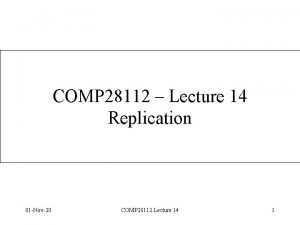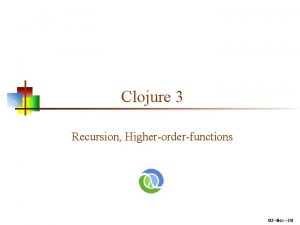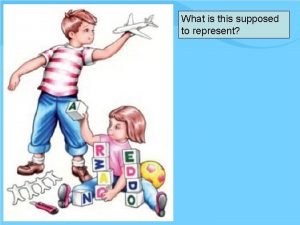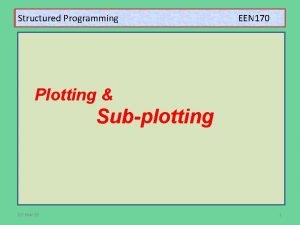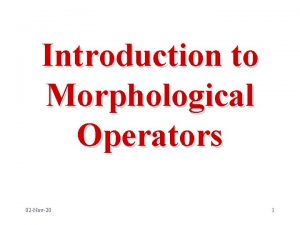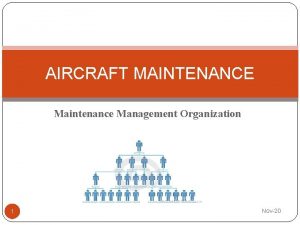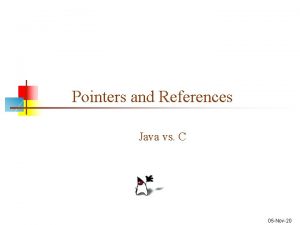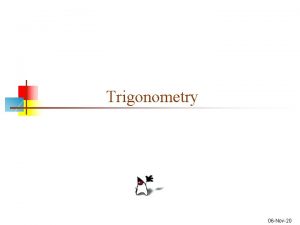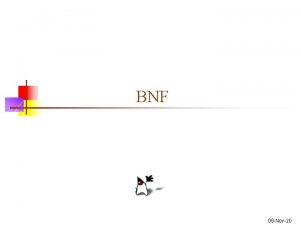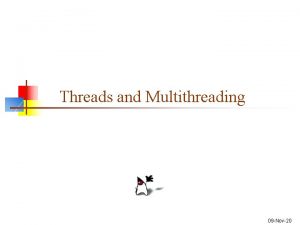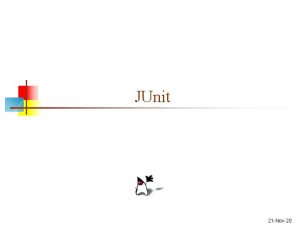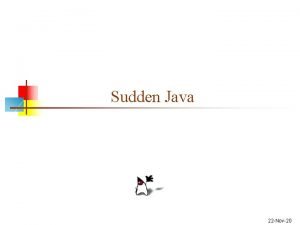09 Nov20 Lecture 03 1 09 Nov20 The




















- Slides: 20

09 -Nov-20 Lecture 03 1

09 -Nov-20 The Cell Membrane 2

09 -Nov-20 3 What is cell membrane ? A film of extreme delicacy, of ultra microscopic thinness, that forms a limiting layer on the surface of the cytoplasm. and it is also called the plasma membrane (cell membrane).

09 -Nov-20 4 Some properties of cell membrane Ø Cell membrane is living, elastic and made of proteins and lipids (fats). Ø The semipermeable nature of the plasma membrane is of the greatest physiological significance in the functions of the cell.

09 -Nov-20 5 The plasma membrane serves as the interface between the machinery in the interior of the cell and the extra cellular fluid (ECF) that bathes all cells. It provides a mechanical barrier for the protection of the inner cell contents and to regulate the movement of molecules in and out of the cell.

09 -Nov-20 Structure of cell membrane 6

09 -Nov-20 7 ü Gorter & Grendel’s membrane theory- (1925) ü Davson & Danielli model- (1940 -1960) ü Singer & Nicolson’s fluid mosaic model- (1972) ü Henderson and Unwin’s membrane theory- (1975)

09 -Nov-20 8 The fluid mosaic model was first proposed by S. J. Singer and Garth L. Nicolson in 1972 to explain the structure of the plasma membrane.

09 -Nov-20 9 Hydrophobic Lacking an affinity for water; unable to absorb, or be wetted by water, "water-fearing. “ Hydrophilic Having an affinity for water; able to absorb, or be wetted by water, "water-loving. “ Amphiphilic Having one surface consisting of hydrophilic amino acids and the opposite surface consisting of hydrophobic (or lipophilic) ones.

09 -Nov-20 Figure: The Fluid Mosaic Model 10

09 -Nov-20 11 Ø The main fabric of the membrane is composed of amphiphilic or dual-loving, bilayer, phospholipid molecules. The lipids in the plasma membrane are chiefly phospholipids (like phosphatidyl ethanolamine) and cholesterol.

09 -Nov-20 12

Why lipid bilayer ? ? 09 -Nov-20 13 As the plasma membrane faces watery solutions on both sides, its phospholipids accommodate this by forming a phospholipid bilayer with the hydrophobic tails facing each other.

09 -Nov-20 14 Ø Integral proteins, the second major component of plasma membranes, are integrated completely into the membrane structure with their hydrophobic membranespanning regions interacting with the hydrophobic region of the phospholipid bilayer. Peripheral proteins are also found here.

09 -Nov-20 15 Ø Carbohydrates, the third major component of plasma membranes, are always found on the exterior surface of cells where they are bound either to proteins (forming glycoproteins) or to lipids (forming glycolipids).

09 -Nov-20 Figure: The Fluid Mosaic Model Ø Why it is called fluid mosaic model ? ? 16

09 -Nov-20 17

09 -Nov-20 18

09 -Nov-20 19 Functions ü Acts as a boundary layer to contain the cytoplasm (fluid in cell). ü Interlocking surfaces bind cells together. ü Selectively permeable to select chemicals that pass in and out of the cells.

09 -Nov-20 20 “Future is created by what you do today, not tomorrow. ” Thank you
 01:640:244 lecture notes - lecture 15: plat, idah, farad
01:640:244 lecture notes - lecture 15: plat, idah, farad Vẽ hình chiếu đứng bằng cạnh của vật thể
Vẽ hình chiếu đứng bằng cạnh của vật thể Quá trình desamine hóa có thể tạo ra
Quá trình desamine hóa có thể tạo ra Các môn thể thao bắt đầu bằng tiếng nhảy
Các môn thể thao bắt đầu bằng tiếng nhảy Hình ảnh bộ gõ cơ thể búng tay
Hình ảnh bộ gõ cơ thể búng tay Sự nuôi và dạy con của hươu
Sự nuôi và dạy con của hươu điện thế nghỉ
điện thế nghỉ Dạng đột biến một nhiễm là
Dạng đột biến một nhiễm là Nguyên nhân của sự mỏi cơ sinh 8
Nguyên nhân của sự mỏi cơ sinh 8 Trời xanh đây là của chúng ta thể thơ
Trời xanh đây là của chúng ta thể thơ độ dài liên kết
độ dài liên kết Voi kéo gỗ như thế nào
Voi kéo gỗ như thế nào Thiếu nhi thế giới liên hoan
Thiếu nhi thế giới liên hoan Phối cảnh
Phối cảnh Một số thể thơ truyền thống
Một số thể thơ truyền thống Thế nào là hệ số cao nhất
Thế nào là hệ số cao nhất Hệ hô hấp
Hệ hô hấp Số nguyên tố là
Số nguyên tố là đặc điểm cơ thể của người tối cổ
đặc điểm cơ thể của người tối cổ Mật thư tọa độ 5x5
Mật thư tọa độ 5x5




















